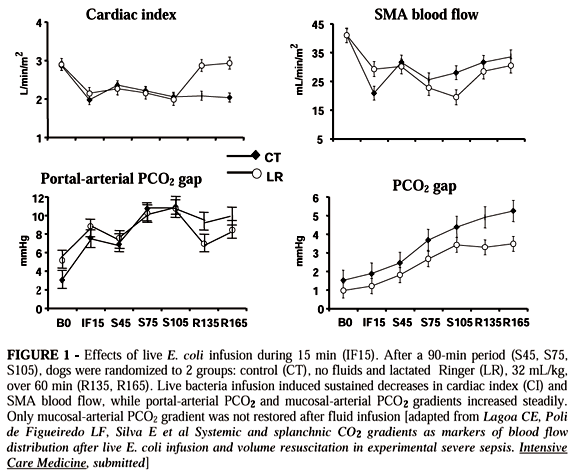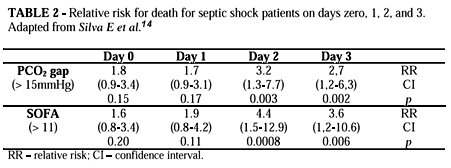Substantial clinical and animal evidences indicate that the mesenteric circulatory bed, particularly the gut mucosa, is highly vulnerable to reductions in oxygen supply and prone to early injury in the course of hemodynamic changes induced by sepsis and septic shock. Gut hypoxia or ischemia is one possible contributing factor to gastrointestinal tract barrier dysfunction that may be associated with the development of systemic inflammatory response and multiple organ dysfunction syndrome, the principal cause of death after sepsis. Monitoring gut perfusion during experimental and clinical sepsis may provide valuable insights over new interventions and therapies highly needed to reduce multiple organ dysfunction and sepsis-related morbidity and mortality. We present our experience with gas tonometry as a monitor of the adequacy of gastrointestinal mucosal perfusion in experimental models sepsis and with the use of vasoactive agents for hemodynamic management in patients with septic shock.
Septic shock; Multiple organ failure; Tonometry; Sepsis; Catecholamines; Gut mucosa




